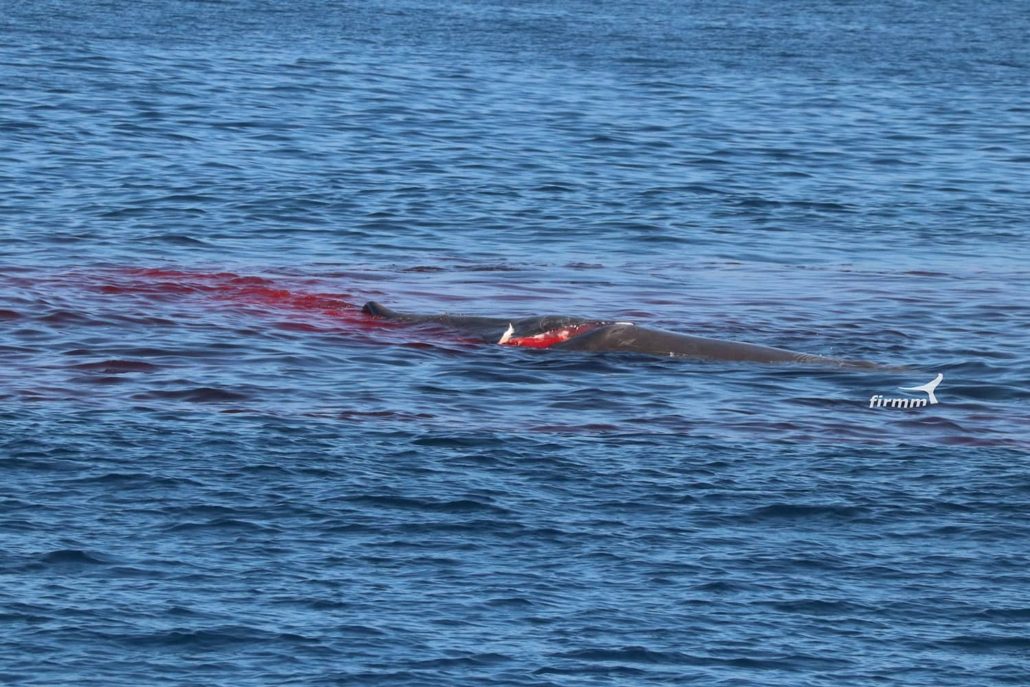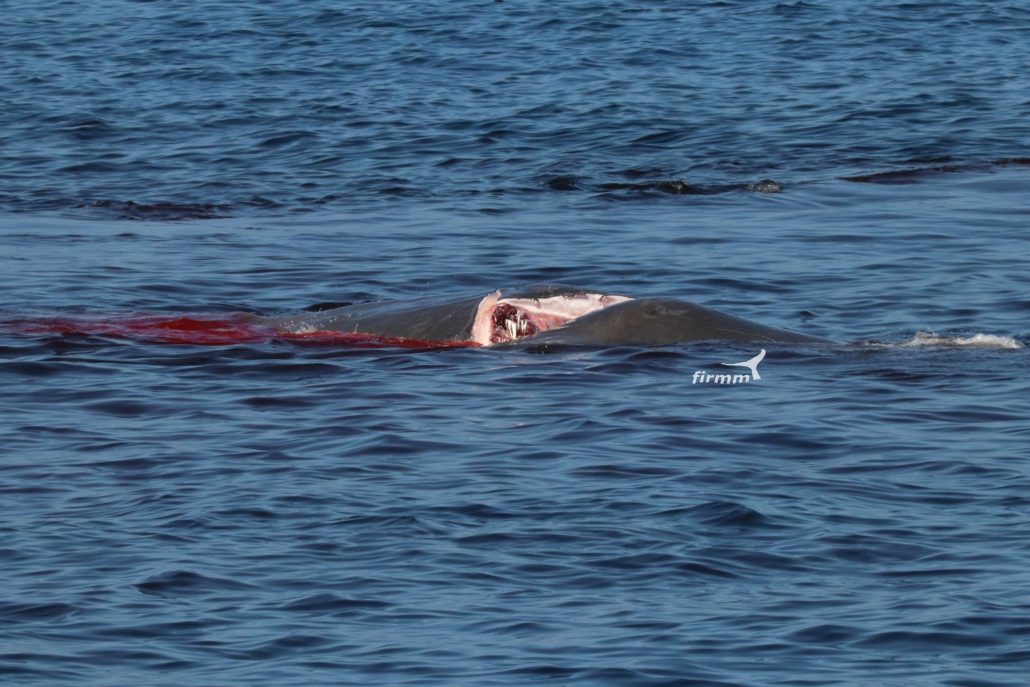Tragic Death of Sperm Whale “Julio” in the Strait of Gibraltar
Likely Another Victim of the Intense Maritime Traffic in the Mediterranean
A sperm whale with a deep gash across its back, almost splitting the animal in two, was tragically sighted on July 26th in the Strait of Gibraltar by the Foundation FIRMM, just a few miles from the town of Tarifa, Spain. The horrifying scene unfolded before the stunned eyes of dozens of whale-watching participants. From the photos, Spanish researchers were able to identify the individual, sighted regularly for about 10 years, known as “Julio,” who has also been studied by the organization CIRCE.
The type of wound, which was bleeding profusely, was most likely caused by a collision with a large ship, such as one of the many cargo vessels that pass through the Strait, or one of the fast ferries that travel from Tarifa to Tangier, Morocco. This is not an isolated incident: two other near-misses with sperm whales were reported in the same area just in June and July, according to the local NGO Nereide.
In the Strait of Gibraltar, cetaceans are forced to coexist with extremely heavy maritime traffic, much like their counterparts in the NW Mediterranean. Recently, a sperm whale named “Atlante” was spotted in the Pelagos Sanctuary with a tail severely damaged, likely by a ship propeller. These cases could be just the tip of the iceberg, as it is believed that most struck animals die, after great suffering, without anyone noticing.
The problem is not confined to one location: sperm whales are capable of long migrations. Several individuals from the Strait have also been spotted off the coast of western Liguria, an area covered by the Cetacean Sanctuary Research project conducted by the Tethys Research Institute.
The tragic issue of ship collisions affects not only sperm whales but also the other large cetacean species in our seas, the fin whale. Both Mediterranean sub-populations, genetically distinct from those in the Atlantic, are classified as endangered on the IUCN (International Union for the Conservation of Nature) Red List.
In a recent scientific article (*) in the journal “Aquatic Conservation,” with first author Alessia Scuderi of Nereide (and collaborator of Tethys), researchers propose concrete measures to reduce collisions in the Strait of Gibraltar. These include mandatory ship observers, specialized training for crew members, and most importantly, reducing ship speeds in high-risk areas and seasons. Speed has been recognized as a critical factor in ship-cetacean collisions, with risks dramatically increasing above 10 knots.
In recognition of experts’ warnings, last year the Marine Environment Protection Committee of the International Maritime Organization (the United Nations agency responsible for regulating maritime transport) declared a part of the northwestern Mediterranean a “Particularly Sensitive Sea Area” (PSSA) with the aim of protecting large cetaceans from ship collisions. This is an important first step, but there is still concern, as the estimated number of Mediterranean sperm whales does not exceed 2,500 individuals – and fin whales likely less than 2,000. Consequently, each human-caused death is a significant loss to the population’s survival.
Maddalena Jahoda
(*) A. Scuderi et al. Tying up loose ends together: Cetaceans, maritime traffic and spatial management tools in the Strait of Gibraltar” (Aquatic Conservation, https://onlinelibrary.wiley.com/doi/abs/10.1002/aqc.4066)










